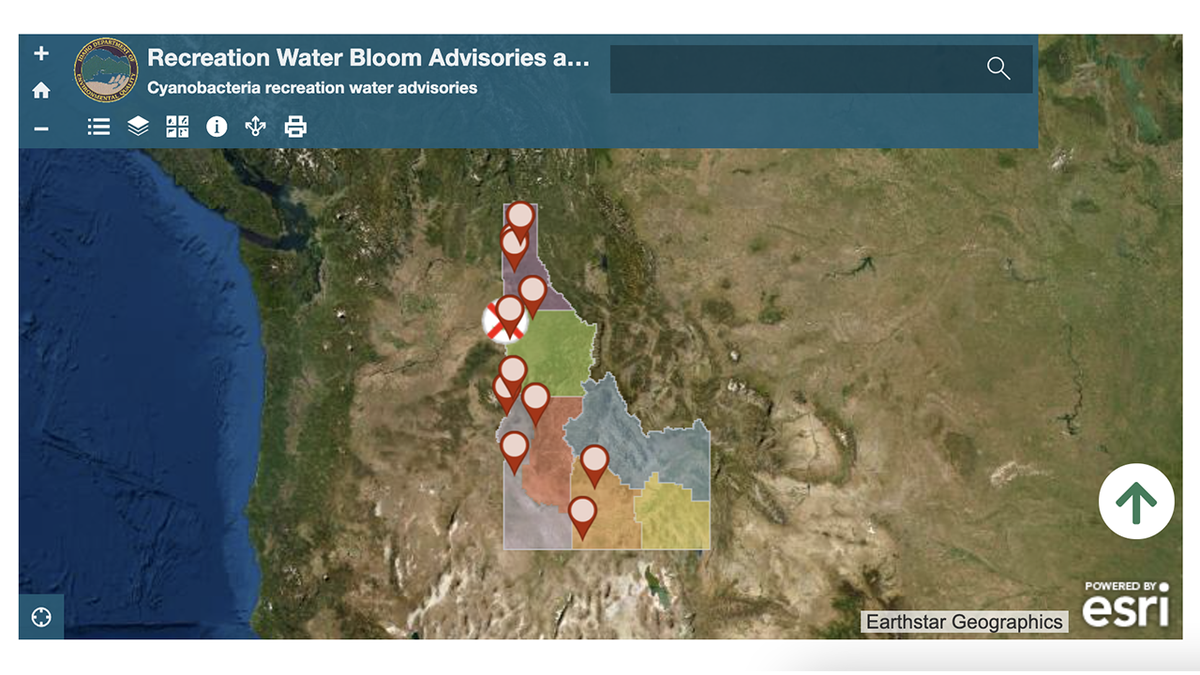DEQ expands statewide cyanobacteria and cyanotoxin response efforts

BOISE, Idaho (KIFI) — The Idaho Department of Environmental Quality (DEQ) is expanding sampling and monitoring efforts across the state to enhance public preparedness and heighten bloom detection.
Summer is the peak season for cyanobacteria harmful algal blooms—commonly referred to as HABs or blue-green algae—and DEQ is taking additional steps to ensure the public has access to timely information.
This includes:
· Increased monitoring and site visits as high-risk sites are identified
· Performing on-site rapid testing as needed for the most commonly encountered cyanotoxin
· Using satellite imagery to characterize and monitor existing and potential blooms
· Collaborating with EPA and CDC laboratories to advance cyanotoxin species detection
· Communicating regularly with the state’s public health districts, state toxicologists, and veterinarians
· Continuing to respond to inquiries and questions from the public
· Updating the Cyanobacteria Harmful Algal Bloom map with new monitoring data
While continuous monitoring and increased sampling will help expand DEQ’s bloom detection capabilities, it is also important to remember that risk still exists when recreating in and around water.
Toxins can be present at varying concentrations
Water bodies can have toxins even without a visible bloom and toxins can be present even at low concentrations. While toxin counts might not be high enough to trigger a health advisory, they can still pose a risk to people and animals.
Weather can impact bloom locations and toxin concentrations
HABs and toxin concentrations can change by the hour. Elements such as wind and rain can impact toxin concentrations, transport a HAB or mat within a water body, or push surface-level blooms down into the water column. This can complicate sampling efforts and increase the need for more frequent and robust monitoring.
Lab tests can detect common toxins, but not all toxins
Standard lab tests can detect the most common cyanotoxins, namely microcystin, cylindrospermopsin, and anatoxin-a, but other toxins might be present in the water. In response, DEQ is expanding testing and working with the nation’s top laboratories to account for additional toxins that have been linked to adverse health effects in other areas of the country.
Health advisories are issued at a certain threshold
DEQ and Idaho’s health districts share responsibility for HABs response efforts. DEQ is responsible for sampling and monitoring water bodies while the health districts determine whether or not a health advisory is necessary based on lab analysis.
There can be occasions where toxin levels might not be high enough to trigger a health advisory but still warrant caution from the public.
DEQ will continue to work with Idaho’s health officials, national experts, and the public to protect human health and ensure that Idahoans have access to the most up-to-date health information. To learn more about current health advisories, visit DEQ’s Cyanobacteria Harmful Algal Blooms page.
The Idaho Department of Health and Welfare also maintains a Harmful Algal Blooms FAQ page, which contains educational material and general information about potential illnesses from recreational waters and drinking water.






